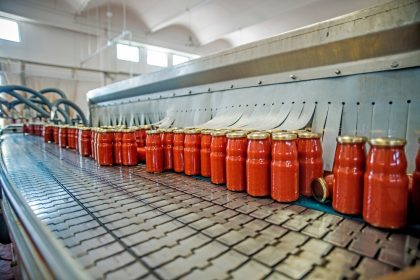Recent research into nutrition has shed light on the significant impact that different cooking methods have on the nutrient content of vegetables. For years, boiling was the go-to method for many home cooks, but studies now suggest that steaming may be the superior option for preserving nutrients and maximizing the health benefits of vegetables. This shift in understanding calls for a closer examination of how to prepare vegetables for optimal health.
Understanding nutrient preservation
Modern nutritional science has revealed that the cooking method used can influence the amount of vitamins, minerals and antioxidants retained in food. A recent study highlighted that steaming is more effective than boiling at preserving vitamins and minerals. This is an important distinction for those looking to maintain or improve their overall health through diet.
Vitamin retention rates
- Steaming can preserve up to 91.4 percent of vitamin C in vegetables, while boiling can lead to losses of up to 54.6 percent.
- Antioxidant levels are better maintained through steaming compared to boiling.
- Mineral content, such as iron and calcium, remains more stable when vegetables are steamed.
These findings highlight a simple truth: the less water used during cooking, the better the nutrients are retained. Since steaming uses minimal water and a lower temperature, nutrients are less likely to leach out.
The steam advantage
There are several reasons why steaming is considered a better method for cooking foods, especially when nutrient preservation is a priority.
Nutrient protection
- Minimal water contact: Steaming prevents the leaching of water-soluble vitamins into the cooking water, which often happens with boiling.
- Lower temperature exposure: The temperatures involved in steaming are typically lower than those used in boiling, which helps preserve sensitive vitamins.
- Shorter cooking duration: Steaming typically requires less time than boiling, which means that nutrients are exposed to heat for a shorter period.
- Enhanced nutrient bioavailability: Cooking methods like steaming can make certain nutrients more absorbable, such as lycopene in tomatoes or beta-carotene in carrots.
Optimal steaming techniques
Knowing how to steam vegetables properly can help maximize their nutrient content. Scientific research supports specific approaches for the best results.
Temperature control
- Maintain consistent steam flow: Ensuring a steady stream of steam is crucial for even cooking.
- Monitor cooking duration carefully: Overcooking can lead to nutrient loss, so timing is essential.
- Avoid overcooking: To preserve the texture and nutrients, remove vegetables from the steamer as soon as they reach the desired tenderness.
- Use appropriate equipment: Investing in a good quality steamer can make a noticeable difference in cooking outcomes.
Vegetable-specific guidelines
The optimal steaming times can vary depending on the type of vegetable being prepared. Research has provided guidance on the best times to steam different foods to ensure maximum nutrient retention.
- Green vegetables: Steam for 3-5 minutes to maintain their color, texture and nutrients.
- Root vegetables: These typically require 10-15 minutes to become tender while retaining their nutritional value.
- Cruciferous vegetables: Steam for 5-7 minutes to preserve their beneficial compounds.
- Leafy greens: A short 2-3 minutes of steaming is ideal for preserving both nutrients and texture.
Beyond basic preparation
There are ways to further enhance the nutritional value of steamed vegetables. Modern culinary science suggests combining vegetables with certain ingredients and taking a few extra steps.
Nutrient optimization
- Combine with healthy fats: Adding a drizzle of olive oil or a sprinkle of nuts can help the body absorb fat-soluble vitamins like vitamin A and K more effectively.
- Add fresh herbs and spices: Flavoring vegetables with herbs like thyme, rosemary and turmeric not only adds taste but also introduces additional antioxidants.
- Consider texture preferences: Steaming allows for better control over the texture of vegetables, making them more appealing for people who are sensitive to certain food consistencies.
- Maximize seasonal options: Using seasonal vegetables can enhance flavor and nutrient content, as these are often picked at peak ripeness.
Future implications
As food science continues to evolve, researchers are developing more sophisticated cooking technologies and methods that could change how we prepare our meals. These advancements are expected to offer greater precision in nutrient monitoring, customized preparation strategies based on dietary needs, and improved storage solutions that maintain the integrity of nutrients for longer.
With the new focus on how cooking methods impact health, it is more important than ever to consider how we prepare our food. Embracing the practice of steaming — combined with mindful ingredient choices — can be a simple yet powerful way to enhance nutrition and overall well-being.

















